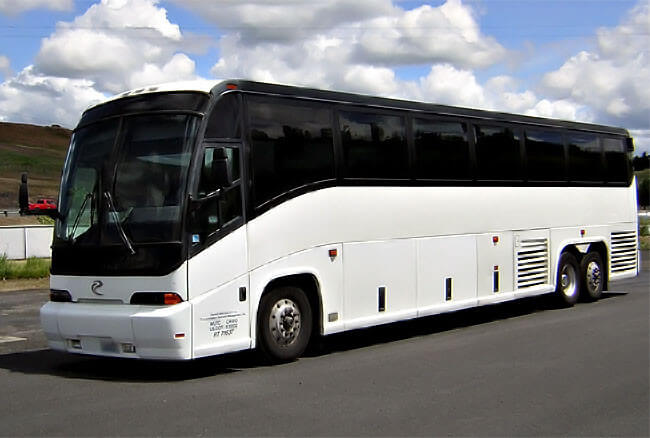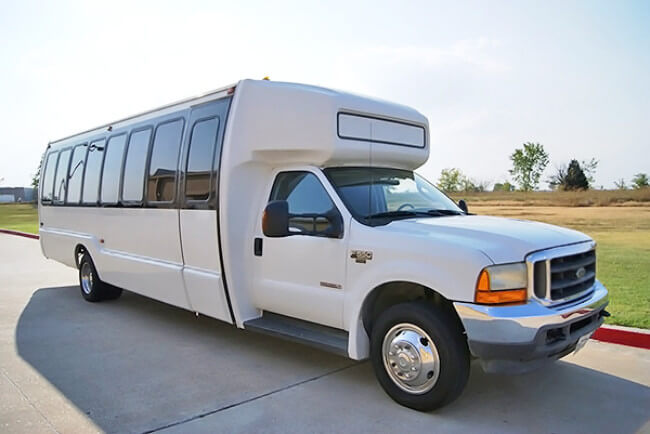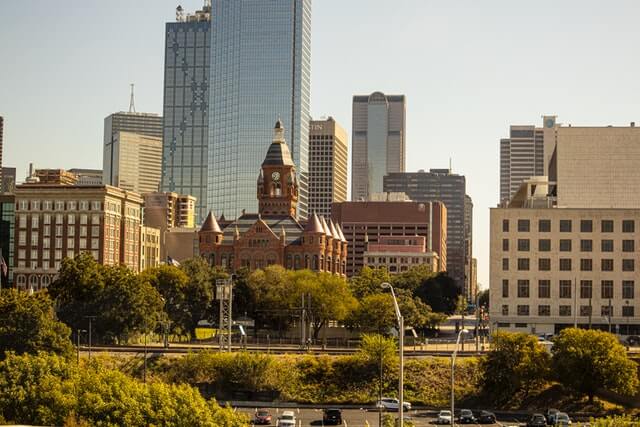
Charter Bus Rentals
Get Instant Pricing
(214) 206-9269
Live Customer Support

Limousines
Get Instant Pricing
(214) 206-9269
Live Customer Support

Mini Bus Rentals
Get Instant Pricing
(214) 206-9269
Live Customer Support

Sprinter Bus Rentals
Get Instant Pricing
(214) 206-9269
Live Customer Support
Do you know the history of Dallas Texas? Well if not, today is your lucky day because we are going to learn about it now. Dallas is located in North Central Texas and is considered as the ninth largest city of the United States. Dallas Texas was founded back in 1841 by John Neely Bryan and was then formally incorporated as a city on February 2, 1856. John Neely Bryan named his town Dallas after one of his friends who lived nearby on the banks of Trinity River who happened to be named George Mifflin Dallas; he was also former vice president under James K. Polk's administration from 1845 to 1849. In its early stages, Dallas consisted mostly of small houses built near each other for protection against Indian attacks, at that time most people were just settling down in this area for farming purposes only. At that time there weren't any modern amenities like AC or heaters installed in homes which made it difficult for families through all four seasons especially summer and winter temperatures which can get very extreme from 90 degrees Fahrenheit to 15 below zero respectively during those two seasons (Temperatures today are still just as bad). Farmers would use burlap sacks or some other cloth material to protect their home windows from getting broken due to hailstorms that would come through at least once every year; but towards late 1800’s things started improving slowly and steadily such as wood structures being replaced with stone buildings plus new construction projects such as schools, hotels, churches were being built since there were more settlers coming into this area trying their luck at farming while enjoying a better quality of life than what they had back where they came from either east coast or mid-west states.  Are you traveling with a large group? Consider a charter bus rental, perfect for medium to large sized groups. We service all major events, and common services such as weddings, birthday parties and more.
Are you traveling with a large group? Consider a charter bus rental, perfect for medium to large sized groups. We service all major events, and common services such as weddings, birthday parties and more.
Dallas was founded in 1841 by John Neely Bryan, a farmer from Tennessee, who established a permanent settlement near the Trinity River. The Republic of Texas was annexed by the United States in 1845, and Dallas County was established the following year. In 1849, three years after Dallas County was formed, it had only 538 residents. Dallas's population rose from 646 people in 1850 to 27,426 in 1860—a 4200 percent increase. That growth continued as many small towns around Dallas merged into it. By 1870, the population was over 41 thousand people. In 1890 its population reached 92 thousand after several more annexations of surrounding areas. Ready more fun? Be sure to check out Lakes in Dallas Texas
The earliest recorded settlement in Dallas was a trading post that John Neely Bryan established on the banks of the Trinity River. It was named “Bryan's Station” in honor of the man who brought it to life, and Bryan himself. Bryan built his house and trading post out of logs at a location he called Three Forks, which is now the site of modern-day Dealey Plaza. He worked with local Native Americans to bring supplies to his village and teach them English, as well as how to grow cotton—a huge growth industry in early Texas. In 1819, he was elected governor of Gonzales County; but before he could take office, however, a deadly cholera epidemic hit the area and took his life at age thirty-nine.
On April 11, 1842, the Texas legislature passed an act allowing for a new county to be formed in north central Texas. The new county was to be called Dallas and was carved from Robertson County. Three commissioners were appointed by the legislature to select a site for the county seat of Dallas. Another group of three commissioners were appointed to survey and lay out a town on that site. The location of the commissioners' camp became known as Commissioners Court or Camp Dallas (later known as Old Dallas). The act also stipulated that land would be sold at public auction once it had been surveyed, with proceeds from the sale used for construction of public buildings in the new town. Meanwhile, residents referred to their new community as Dallas; there is no record of where that name came from though some have speculated it was named after George Mifflin Dallas, Vice President under James K. Polk (1844-1848) If you are planning a trip to the Dallas area, with a large group of passengers you can count on a Dallas bus rental to transport your group to your desired locations. Enjoy stress free group transportation with a coach bus rental perfect for 45-60 passengers.
Plano and Dallas were founded in 1844 by John Neely Bryan. Plano is a city in the U.S. state of Texas, located approximately twenty miles north of downtown Dallas. The city of Plano is a part of the Dallas-Fort Worth metropolitan area. Plano lies mostly within Collin County, but includes a small portion that extends into Denton County. 
The Mexican-American War (1846–48) was conflict between the United States and Mexico over the annexation of Texas. The terms of annexation were signed in 1845 as part of a treaty negotiated between the two countries. However, Mexico refused to recognize the treaty and broke off diplomatic relations with the United States. In January 1846, President Polk sent General Zachary Taylor to the Rio Grande border to protect America’s claim on Texas. When Mexican troops attacked a detachment of U.S. soldiers in May, Polk asked Congress for a declaration of war against Mexico, which they passed by a large majority on May 13th.
After the end of the civil war, Dallas entered a new era in their history. During this time Dallas was faced with many complex challenges. These challenges included social, political and economic issues that had not been seen before in Dallas's history. The reconstruction era presented many challenges to the city of Dallas. In order to overcome these trials, Dallas underwent drastic changes economically and socially. Many political factors also had an impact on how Dallas was able to respond to these changes. The end result was a complete transformation of the city and its people alike. The former residents were now forced to adapt to a new reality that they never imagined possible prior to this point in history.
Railroad boom era (1873–1912) The city of Dallas was founded in 1842. In the spring of 1872, the Southern Pacific Railroad Company broke ground on what would become the town's central section. The railroad itself arrived in Dallas on September 25th, 1873. The railroad was expected to carry materials across the state and allow for a more efficient distribution system that would allow Texas farmers to sell their goods with less time wasted traveling from farm to farm. In early 1874, the area's population had grown to over 2,000 settlers thanks to the arrival of thousands of workers for the new railroad branch. By April of 1875, over 10,000 people had made their homes in Dallas' central section. Many settlers soon discovered that they could profit off of trade as well as agriculture if they were able to sell out products using railroads throughout Texas. Cotton was one such product that gained traction as a result of this new rail line..
Dallas was founded by John Neely Bryan, a one-eyed lawyer from South Carolina who struck oil in the early 1930s. The city grew rapidly as workers flocked there to work at the new oil fields. In the midst of the Great Depression, Dallas experienced a boom that extended well into World War II. However, the war ended a decade later and America's economy went bust. Oil prices plummeted and Texas' oil production dramatically declined. These changes led to significant population losses in Dallas and many other cities where people depended on oil for their livelihoods. Dallas has nearly recovered its population since then, but it has not been able to regain its place as an energy hub like it once was.
Dallas is the ninth largest city in the United States and has been ranked as one of the most livable cities in America by numerous publications. It's a modern metropolis that boasts great museums, shopping centers, restaurants, theaters and more. As if all this weren't enough to attract sightseers and tourists, Dallas also has a strong history as well as an thriving future. Dallas is situated between Fort Worth and Arlington, giving it access to millions of people who live in those two cities. This makes it an ideal spot for business owners who want access to a large market of potential customers.
Get Instant Pricing & Availability No Email required.